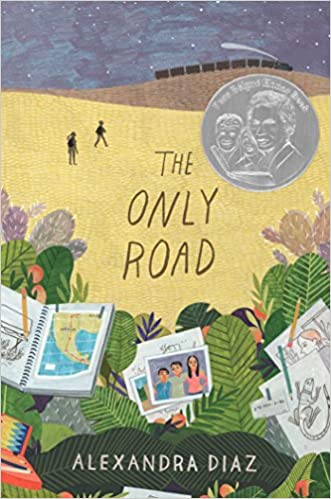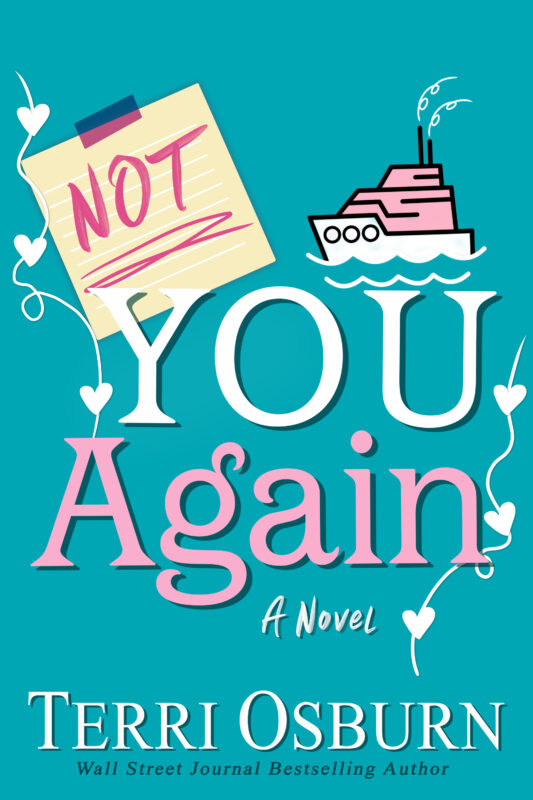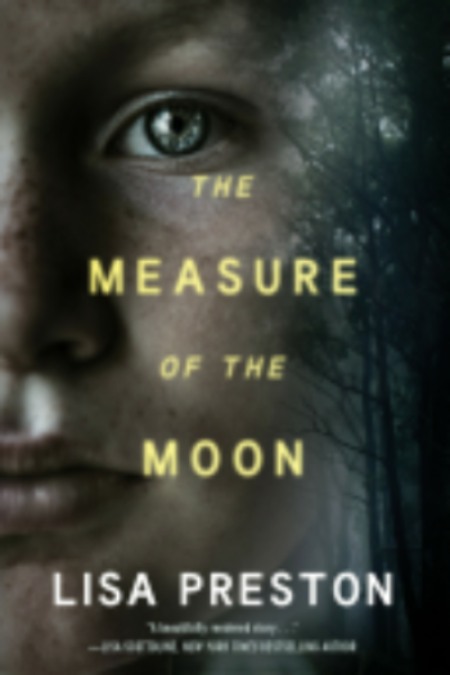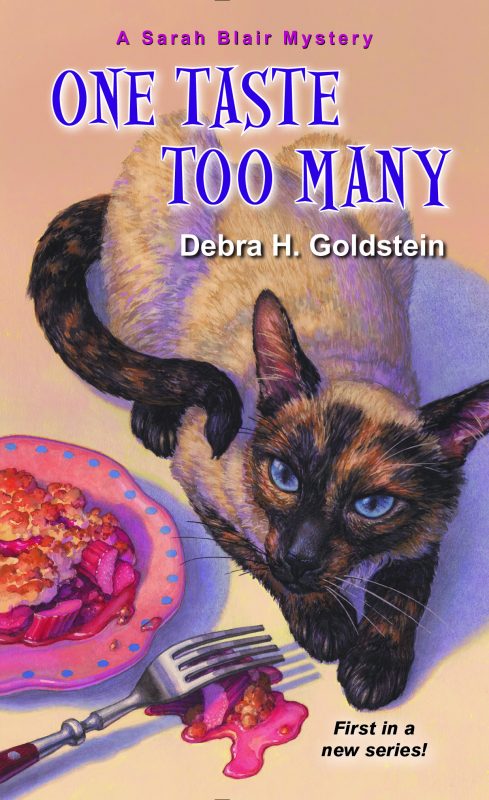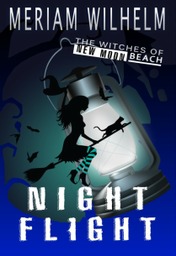Criticism: Big Girl Panties for Ruth by Jenny Jensen
February 19, 2021 by Jenny Jensen in category On writing . . . by Jenny Jensen tagged as constructive criticism, critiques, Editors, Jenny Jensen, writers
Or How to Take It on the Chin and Grow
(From our archives. We hope you enjoy this rerun from Jenny Jensen)
I attended an author’s chat the other day at our local library. It’s always fun to hear an author talk about their craft— especially if you like their books. The bonus is mingling with other attendees. Who among us doesn’t enjoy chatting with fellow book lovers? I found myself in conversation with two women, each funny, gracious and interesting. When talk got to the inevitable “so what do you do?” I learned Kit was a nurse and Ruth, a writer. I added that I’m an editor and while Kit smiled acknowledgment, Ruth scowled.
Ten minutes later—after Kit had smiled apologetically and bowed out—I’d learned all about Ruth’s experience with editors. “They call themselves editors, but they’re really just critics. They couldn’t even follow the story, let alone the subtext. They’re just mean, simple-minded wannabe writers” and so forth. Yowza! I’d never encountered that before. I know a lot of editors, and none of them fit that bill. Best to just nod and try to look sympathetic while keeping an eye peeled for a graceful escape. Ruth had either met the world’s worst editors, or she’s simply unable to handle criticism. I suspect the latter.
Writing is hard, solitary work. It’s just you creating in a vacuum. Writing requires hours of reading, writing and revising, searching for just the right words to make a character live and breathe, the perfect plot twist, the right feel. Writing writing writing, and then hours of revision. The whole blood, sweat and tears combo. Then there’s the criticism; every writer has to face it if they want to share their work outside that creative vacuum.
It can be a hard pill to swallow. I know. I’ve been singed by some very savvy, very critical edits. Hard to have your heart and soul — not to mention all that BS&T—picked to pieces by others. But like mammograms, taxes and dirty diapers, it has to be faced.
As an editor, I’m really loath to offer a ‘critique’. That word has such baggage. If words have color, then criticism is a red-tinged pulsating mash-up of bruised blue and black. I prefer to think of what I do as editorial assessment, or an overview. (Words really are powerful, aren’t they?!) But no matter how I spin it, it comes down to criticism.
Criticism is like cholesterol; there’s the good kind and the bad kind. The LDL kind, the bad kind, is empty criticism. “ I don’t like it”, “Flimsy and transparent” or “I don’t get it”. My favorite being, “yeah, I read it. Interesting”. Ouch! Then there is the polite, painless approach: “Very nice!” What could that possibly mean?
Constructive criticism is HDL cholesterol, good for every writer’s circulation. Good criticism points out pitfalls and weaknesses, but it also explains why they are pitfalls and weaknesses. It sheds light on why it doesn’t work. Really good, healthy criticism offers solutions. I never expect an author to accept a solution I offer (and most don’t, they find their own). I offer it as a straw man—something to consider, breakdown, reject and replace with a better approach because suggesting a substitute shows the author the problem needing a solution. It’s because a writer creates in isolation that they can’t always hear a misstep. I’m guessing Ruth’s missed subtext was so sub it wasn’t there. Point this out to a writer and the light bulb goes on; they revise, and the story is stronger.
How should you, as a writer, react to criticism? You wrote it, you shared it—you must learn to account for it. How do your words strike people? Did the reader see nothing where you intended a scene to be revealing or suggestive, and so the story is confusing? You can’t dismiss the reader as thick, dense or stupid. You have to look at your words and consider improvement because clearly, those words didn’t do the job you had intended. Whether it’s a missed plot point or character motivation that can’t be seen, maybe it isn’t on the page; it’s still in your head. Revise, rewrite. Listen to the audience your words are intended for. The best writers respect their readers. Your work will only get better.
A good editing critique helps you identify weaknesses. Don’t take it personally. Constructive criticism is useful precisely because it isn’t personal. Your BFF is unwilling to risk a response that might be hurtful, but is that what a writer needs?
Writing’s about kicking doubt in the ass and shoving him out the door. Editing’s about inviting him back in for tea and scrutiny. *
I wish Ruth had invited her editor back in.
*from @novelicious, that magical twitter feed that is double chocolate for every writer’s sweet tooth.
0 0 Read moreWriting The Dreaded Book Blurb by Jenny Jensen
January 19, 2021 by Jenny Jensen in category On writing . . . by Jenny Jensen tagged as Blrubs, clickbait, Marketing, writing, Writing the Dreaded Book BlurbFrom our Archives

Cartoons by John Atkinson, www.wronghands1.com
Writing The Dreaded Book Blurb
Every author faces this last crucial challenge. You’ve already spent untold hours researching, writing and editing your book. Your title hits just the right poetic note. You’ve gone several tense rounds to find the perfect cover. All that remains is the book blurb, the opening salvo in the promotional war. This is the first (and sometimes only) chance to grab a reader and compel them to buy the book. And so, like click bait, you need to lure your reader with an honest but irresistible snap shot.
It’s an Art
It’s an art, this writing of a synopsis that isn’t a synopsis, this sell copy that isn’t an ad. And for something that isn’t a science there are strict rules: you have to be honest – no misleading the reader. No spoilers or why bother to read it – which can be tough since the spoiler is often the most exciting part of the story. Keep it at 200 words or less and don’t make it one run-on paragraph. Use the proper keywords for your genre. Reveal something about the antagonist – readers like to know if they can root for the hero. This isn’t the place to relate the entire plot but you have to provide the zeitgeist, the feel of the tale. No easy task.
A lot of the writers I work with find this daunting and ask for help, which I am happy to provide. I think it’s difficult for the writer to step far enough away from their work to pick out the enticing, salient points and present them with the tension and intrigue that make for a successful blurb. To the author, all story points are important. I get that, but as an avid reader I know what works for me in a blurb. It’s not how much is said, but how compellingly it’s said.
Bare Bones
I start with a deconstruction approach. It’s possible to distill any story down to bare bones. In his book Hit Lit – Cracking the Code of the Twentieth Century’s Biggest Bestsellers James W. Hall provided the most distilled example I’ve ever seen. This is a beloved tale that we all know intimately: “A young girl wakes in a surreal landscape and murders the first woman she sees. She teams with three strangers and does it again.” It’s short, accurate and intriguing but would it sell the book?
I wouldn’t distill it down that far but it makes a great beginning. What if we knew something about the young girl – an orphan, a princess, a refugee? And what about the surreal landscape – gaping desert, oozing swamp, forbidding mountains? Then the three strangers – female, male, older, menacing, kindly? Is all this murdering spurred by necessity, thrills, defense, the three strangers or is it unintended manslaughter? And finally, what is the young girl up to – revenge, enlightenment, finding a way out of the surreal landscape? Flesh out those points, add some genre keywords, reference any kudos and you could turn those original 24 spartan words into a 160 – 200 word blurb that would peak curiosity and entice the shopper to buy.
Primary Elements in a Provocative Way
If you can step away from the totality of your story and deconstruct the plot to the primary elements, then present those elements in a provocative way you can create an effective selling tool with your book blurb. BTW, that book Hall described? The Wizard of Oz.
~Jenny
Cross Words by Jenny Jensen
December 19, 2020 by Jenny Jensen in category On writing . . . by Jenny Jensen tagged as cross words, fun, Jenny Jensen, language, puzzles, words
In these times of pandemic lock down we’re all searching for something that will absorb us, entertain, teach–challenge us. I’ve dabbled in baking (very mixed results), sewing (mended everything mendable), crafty things (be glad you’re not on my Christmas list), knitting (have you seen the price of good wool?). They all passed the time between books, but none inspired a passion and I didn’t feel particularly challenged.
My grandmother and my mother were both avid cruciverbalists. Not only does that sound exotic, it felt like I’d be carrying on a tradition. Those esteemed women fearlessly challenged their brains daily. I bought a puzzle book with 99 crosswords claiming to “be enjoyable at all solving levels”. Perfect! I could limber up and go on to the hard stuff.
I felt I had gotten the knack with the first 30 puzzles. Sharp flavor, four letters–TANG. This is a breeze. The next 56 began to take some effort: Central parts, six letters, fifth being ‘e’. Hmmm. I consider all things central and am not arriving at those 6 letters, the fifth of which is ‘e’. Then I crossed words with Tile problem and MILDEW gives me ‘L’ for the fourth letter. I hit on nuclei. I got it! Central parts: NUCLEI pl. I am strutting like a peacock, never mind that it isn’t a commonly used word. “The nuclei of the garden are the tulips and the erotic statue.” Naw. Clearly this is a new language.
I like to think I am an honest sort, so I keep count of how many times I peek at the answers page. Eight times over 86 puzzles; a mere misdemeanor. Many of the clues involve rather esoteric and antiquated knowledge. I feel I can be forgiven for not knowing every letter of the Greek alphabet or the lessor characters of 19th century French drama. I now include recent pop music titles among esoteric knowledge. I do not know a single Abba song title. (This leaves me feeling hopelessly uncool, but never mind.)
Still, I’m getting better–that is, until number 87. I feel like I’m taking an exam in advanced astrophysics–and it’s in Brail. Philanthropy source, 11 letters. I get there finally with the help of crossed words: BILLIONAIRE. It’s so obvious, so clear and so disheartening that I’d agonized over this. Then a light bulb goes on and I realize crosswords do not involve a new language. It’s still English (except for those pesky Greek letters). What is needed here is an entirely different thought process, a less rigid way of considering words.
I need to be flexible, more elastic than Silly String, more malleable than Play Dough. How else can you arrive at ROLE as the answer to Office? It’s all those English words with multiple meanings, all the nuances of our language that makes for rich, lyrical writing. It’s the forgiving nature of our language that allows us to get by with radical interpretation, lets us stretch the truth, so to speak. I’d been ignoring what I already know and what I love so much about writing.
Puzzle 88 is next and it looks daunting. It’s a giant grid with one and a half pages of clues. I’m going to be like water and with each clue let my mind flow over and under, through and past pedestrian definition until I arrive at the clever stretch, the humorous bent, the deceptively simple answer. It’s poetic.
I’m determined to join the ranks of my foremothers and become a cruciverbalist. I may pull out all my hair, but I intend to get there. I am definitely Faced off, 10 letters.
Coming Soon by Jenny Jensen
November 19, 2020 by Jenny Jensen in category On writing . . . by Jenny Jensen tagged as covid, fantasy, fiction, Influences, mystery, romance, science fiction
Every writer is subject to the influences of their time, influences that shape their work in some way. From Stephan King’s brand of horror—which he’s said was influenced by the pervasive fears of the cold war — to the oh so mannerly and delicately choreographed plots of Regency era literature, a reader can feel the spirit of the author’s era. I think that’s why I love H. G. Wells and his manly adventurers whose waistcoats and stiff collars are never out of place despite the monsters and hazards that beset them, and they always have time for a full service tea.
Covid is the strongest influence on us at present, changing behavior at a really basic social level, and I am eagerly anticipating how that will be reflected in contemporary fiction. Each genre presents a host of different affects to play with. How will full dress PPE impact the mystery and crime genre? With my mask in place, my sunglasses on my nose and a cap on my head, I am hard to recognize. Add gloves to that, and I don’t have to sweat over fingerprints. And if you’re not short and a touch chubby like me, it would be easy to quickly blend in with the (6 feet apart) crowd and make a smooth getaway. Does anyone want to get near enough to grab a suspect?
Science fiction, viewed through this lens, might use the long-lasting effects of a worldwide pandemic in interesting ways. The population has been decimated, but the disease is at last eradicated. Does the population retain a fear of personal distance? Does it become ritualized? Do they formalize ways of washing their food, like futuristic raccoons? Has public dining or public attendance at an event become distasteful, and if it is replaced, what with? That could be really fun.
Fantasy always gets a lovely reality pass. That’s part of why we love it. Fantasy isn’t required to reflect anything about the real world. But again, every writer is working through the lens of their own reality and all these new behaviors and social concerns are bound to be reflected somehow. Maybe it’s a race of creatures that are forever shunned—The Cooties. You can’t ever get close to them or they will sicken you, but the hero requires the help of those outcasts and so the taboo has to be overcome. It could be that a virus has been locked in a magic cave and as the ultimate weapon, it must be guarded by the heart of a dragon. The influence of this pandemic will be in there somewhere.
Then there’s Romance! I am especially eager to see how this genre deals with our current reality. One of the hallmarks of Romance fiction is its timeliness. We never tire of boy meets girl stories set in the shared here and now. These are tales that reflect our contemporary social and moral norms with the clarity of a mirror image. How will masks and gloves and 6 feet apart influence a love story? How will a chance meeting play out? Is love at first sight possible?
I have complete faith in Romance authors to create inventive and realistic approaches to this current social reality. I haven’t come across any yet. I may not have looked hard enough, but if you know of a romance in the time of Covid, I hope you’ll share it with me. I can’t wait to read it.
Jenny
0 0 Read moreVibrant & Vile Villains by Jenny Jensen
October 19, 2020 by Jenny Jensen in category On writing . . . by Jenny Jensen tagged as Complex villains, Good villians, Villains, writing
“All stories are about wolves. Anything else is sentimental drivel.”
Margret Atwood
That’s a strong statement—lots of ways to interpret it. I love it because to me, it says that all stories should have a villain. And I agree. How can you have the good without the bad? Where would the tension live? If something has to be overcome, you need a villain to vanquish. And if the plot needs redemption the story needs a villain to redeem. (A Christmas Carol without Ebenezer’s reform? Unthinkable.)
The villain isn’t always a person. It can be an institution,or an illness, or Mother Nature. All those ‘larger issue’ villains work for some magnificent tales, but my favorites are the really awful, mustachet wirling, gloating, cackling, venal bad guys.
Good Villains–we love to hate them
Good villains, the kind we love to hate, are never one dimensional tools included just to make the protagonist work hard to overcome something. A well-drawn villain is a fully fleshed out character with attributes, history, and purpose strong enough to motivate and justify the hero’s tribulations. We’re so fully shown who and what Mordred is that his relentles spursuit of King Arthur is entirely credible—and because Arthur is beautifully depicted
—it’s personal to the reader. Now that’s an enthralling story.
Whether redeemable or irredeemable the villain is often the best part of a story. No one can think of Oliver twist without Fagin popping upwith his “…face obscured by a quantity of red hair” as he beats and betrays the children he has enslaved. We don’t forget Oliver, but we don’t dream about him either (or is that a nightmare?). When a character is that memorable it’s because something, if not everything about him, is relatable.
Complex Villains
To develop a really badass villain, one whose actions the reader can understand and accept, the character needs some face time. Not as much as the hero certainly, but enough to lay the background for future actions, enough to make him real and fathomable. There is nothing more boring than a serial killer who is seen only through the gruesome details of the killing. If he is complex, as real people are, if he is exceptional in some way that supports an evil bent, then all the more disconcerting—like the jolly neighborhood butcher whose cutlets may not all be beef.
Some of the best villains have sterling personality traits. Perhaps they’re charming, or witty, well mannered and gracious. Traits contradictory to the villain’s actions make those bad actions all the more frightening. Showing the bad guy through contradictory traits is a powerful tool but if you work at it you can spin evil traits to appear benign—until they’re not. That’s chilling.
A well-developed villain written as an authentic character will give any story the spice it needs. Who will your next villain be?
0 0 Read more
Affiliate Links
A Slice of Orange is an affiliate with some of the booksellers listed on this website, including Barnes & Nobel, Books A Million, iBooks, Kobo, and Smashwords. This means A Slice of Orange may earn a small advertising fee from sales made through the links used on this website. There are reminders of these affiliate links on the pages for individual books.
Search A Slice of Orange
Find a Column
Archives
Featured Books
NOT YOU AGAIN
Four blind dates in five days. I can’t believe I agreed to this.
More info →THE MEASURE OF THE MOON
“If you ever say anything to anyone, they all die.”
More info →ONE TASTE TOO MANY
For culinary challenged Sarah Blair, there’s only one thing scarier than cooking from scratch—murder!
More info →NIGHT FLIGHT
Olivia Merriman’s witchy wiring has all gone haywire and if she doesn’t get it under control soon she’s going to lose her boyfriend, her magic and a whole lot more!
More info →Newsletter
Contributing Authors
Search A Slice of Orange
Find a Column
Archives
Authors in the Bookstore
- A. E. Decker
- A. J. Scudiere
- A.J. Sidransky
- Abby Collette
- Alanna Lucus
- Albert Marrin
- Alice Duncan
- Alina K. Field
- Alison Green Myers
- Andi Lawrencovna
- Andrew C Raiford
- Angela Pryce
- Aviva Vaughn
- Barbara Ankrum
- Bethlehem Writers Group, LLC
- Carol L. Wright
- Celeste Barclay
- Christina Alexandra
- Christopher D. Ochs
- Claire Davon
- Claire Naden
- Courtnee Turner Hoyle
- Courtney Annicchiarico
- D. Lieber
- Daniel V. Meier Jr.
- Debra Dixon
- Debra H. Goldstein
- Debra Holland
- Dee Ann Palmer
- Denise M. Colby
- Diane Benefiel
- Diane Sismour
- Dianna Sinovic
- DT Krippene
- E.B. Dawson
- Emilie Dallaire
- Emily Brightwell
- Emily PW Murphy
- Fae Rowen
- Faith L. Justice
- Frances Amati
- Geralyn Corcillo
- Glynnis Campbell
- Greg Jolley
- H. O. Charles
- Jaclyn Roché
- Jacqueline Diamond
- Janet Lynn and Will Zeilinger
- Jeff Baird
- Jenna Barwin
- Jenne Kern
- Jennifer D. Bokal
- Jennifer Lyon
- Jerome W. McFadden
- Jill Piscitello
- Jina Bacarr
- Jo A. Hiestand
- Jodi Bogert
- Jolina Petersheim
- Jonathan Maberry
- Joy Allyson
- Judy Duarte
- Justin Murphy
- Justine Davis
- Kat Martin
- Kidd Wadsworth
- Kitty Bucholtz
- Kristy Tate
- Larry Deibert
- Larry Hamilton
- Laura Drake
- Laurie Stevens
- Leslie Knowles
- Li-Ying Lundquist
- Linda Carroll-Bradd
- Linda Lappin
- Linda McLaughlin
- Linda O. Johnston
- Lisa Preston
- Lolo Paige
- Loran Holt
- Lyssa Kay Adams
- Madeline Ash
- Margarita Engle
- Marguerite Quantaine
- Marianne H. Donley
- Mary Castillo
- Maureen Klovers
- Megan Haskell
- Melanie Waterbury
- Melissa Chambers
- Melodie Winawer
- Meriam Wilhelm
- Mikel J. Wilson
- Mindy Neff
- Monica McCabe
- Nancy Brashear
- Neetu Malik
- Nikki Prince
- Once Upon Anthologies
- Paula Gail Benson
- Penny Reid
- Peter Barbour
- Priscilla Oliveras
- R. H. Kohno
- Rachel Hailey
- Ralph Hieb
- Ramcy Diek
- Ransom Stephens
- Rebecca Forster
- Renae Wrich
- Roxy Matthews
- Ryder Hunte Clancy
- Sally Paradysz
- Simone de Muñoz
- Sophie Barnes
- Susan Squires
- T. D. Fox
- Tara C. Allred
- Tara Lain
- Tari Lynn Jewett
- Terri Osburn
- Tracy Reed
- Vera Jane Cook
- Vicki Crum
- Writing Something Romantic
Affiliate Links
A Slice of Orange is an affiliate with some of the booksellers listed on this website, including Barnes & Nobel, Books A Million, iBooks, Kobo, and Smashwords. This means A Slice of Orange may earn a small advertising fee from sales made through the links used on this website. There are reminders of these affiliate links on the pages for individual books.

